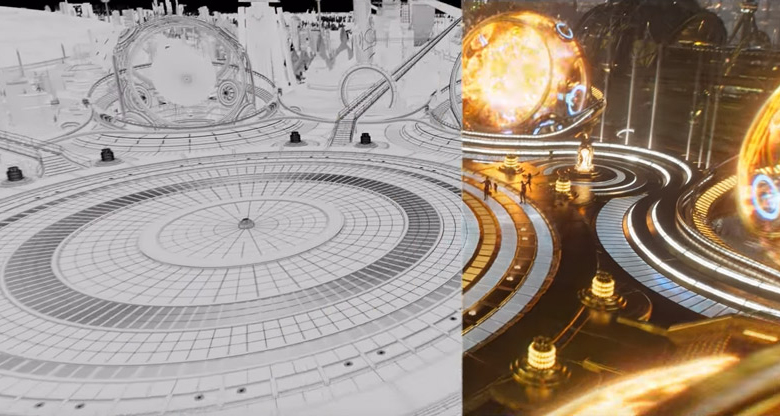Thanks to 3D graphics, incredible space battles, fairy-tale worlds, heroes with superpowers, and other fantastic elements appear in movies and TV shows. But how are special effects and computer graphics created? We'll answer this question in this article.
Stages of 3D modeling in the film industry
Modern powerful programs for 3D-modeling help create three-dimensional characters and landscapes with maximum accuracy. To bring an idea to life, the 3D modeler uses projections of drawings, sketches, detailed descriptions of objects or plots, and other graphic and textual data.
For example, the program 3D Max, which is actively used to create special effects in movies, allows you to consider three-dimensional object from all sides and insert it into any realistic environment. However, the creation of high-precision graphics requires time, effort and knowledge. Therefore, the realization of 3D-projects employ specialists from various fields of 2D-artists, filmmakers, production designers to hundreds of 3D-modellers, engaged in modeling, texturing, animation, rigging, rendering.
The process of creating 3D models in the video industry itself is divided into the following stages:
• Creating the model.
• Superimposing colors and materials on the model.
• Creating the virtual "skeletons" necessary to animate the characters and environments.
• Bringing the objects to life - animation.
• Visualization, recording the resulting graphics - rendering.
• Creating the final scenes, making adjustments, adding various special effects - compositing.
Each stage has its own characteristics. At the same time there are a lot of ways of modeling, as well as programs for 3D-modeling.
The most popular methods of 3D modeling in cinema
NURBS modeling and polygonal modeling are used in 3D design. What are the differences between them:
• NURBS. It represents a mathematical form that generates and depicts various curves and surfaces.
• Polygons. Unlike curves, it provides a simple and fast visualization. The polygon itself represents a polygon shape - a surface, which is enough to visualize a 3D-object. The more polygons, the higher the quality of the model is, expressed in detail and high resolution. Depending on the number of polygons, 3D objects can be low-polygonal and high-polygonal.
If the rendering of an ordinary object takes a few hours, the rendering of a high-polygonal model, designed for the movie will require from one week to several months.
When the model is created, color and materials are superimposed on it. Texturing is done by the texture modeller. A texture scan is made beforehand, which is a 2D image that shows all the surfaces of the 3D model. Without the scan, it is impossible to apply textures correctly and smoothly.
The next step is the rendering of textures. At this stage, the artist creates a set of textures: all the shades used, the relief and its visibility map, glare, roughness. Thanks to texturing, the full image of the hero or a particular location is created, their character and other features are reproduced.
To make the model move realistically, a virtual skeleton is created within it. This stage is called rigging. It will help to bring the object to life, to establish a relationship between all the bones and joints of the character. It doesn't matter what kind of object needs to be brought to life: a person, an animal, an insect or a fairy-tale tree. Skeletal animation will allow you to control any part of the animated figure from the limbs to the eyebrows.
At the animation stage, animation artists are involved in the work. The task of the specialists is to create realistic movements. A particular difficulty is to " teach " the character to interact with the real actors.
The easiest method of "animate" the character is frame-by-frame animation. However, to recreate complex movements, this method requires the animator tremendous work and talent. To facilitate the task applies technology Motion Capture, which allows you to combine the movements of a real person with the movements of 3D-hero. A special sensors are put on the actor, which instantly read any action, including the emotions on the face.
The penultimate stage is visualization or rendering. Post-rendering is used in the creation of films. It's not the speed that's important here, but the excellent quality of the graphics.
The final step is compositing, which allows you to combine all the scenes of the video into a whole: 3D characters, locations, special effects, the actual video picture. Also, during the compositing stage, specialists make adjustments and remove unnecessary scenes.
3D-modeling blurs the line between the real world and fiction, animation and video editing. Thanks to 3D technology viewers see things that simply do not exist, and filmmakers embody on the screen any ideas that 30 years ago seemed unthinkable.

